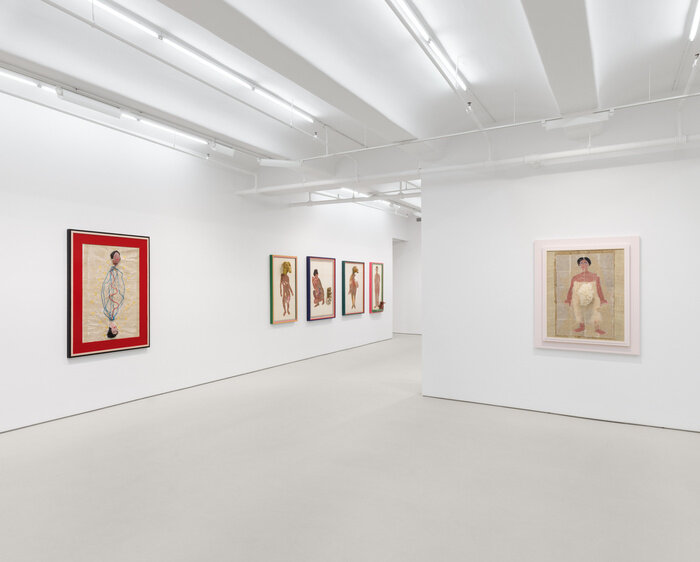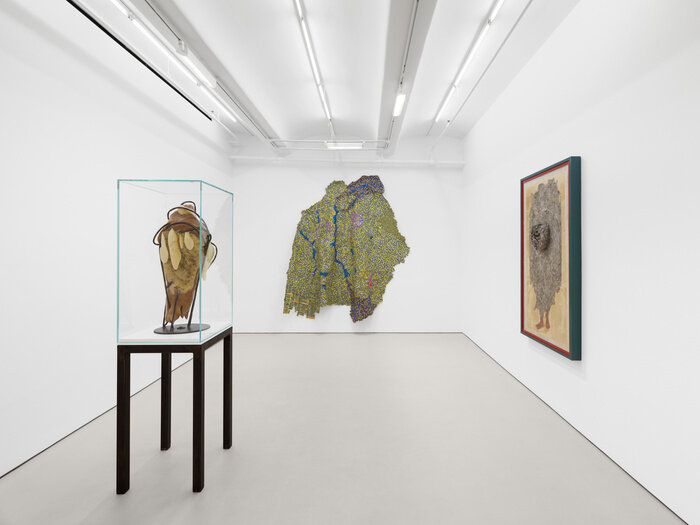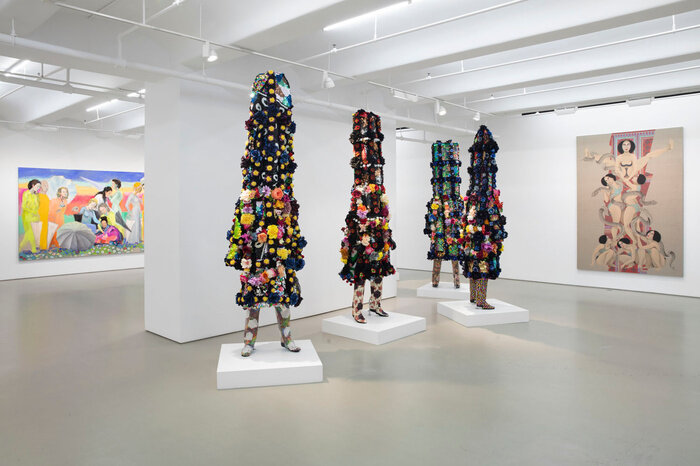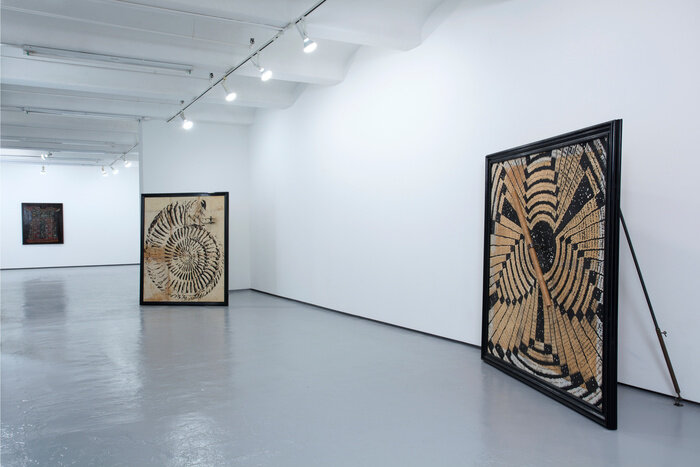Lyne Lapointe
Works (Tap to zoom)
Biography
Lyne Lapointe (born in 1957, Montreal, Quebec) is a multidisciplinary artist that has been creating for over four decades a robust and magical array of pictorial and mixed-media works that combine her interest in popular and historical sources, and her fascination with animal imagery and human figures, with the use of collage techniques and extraordinary craftsmanship.
Guided by an interest in what has been termed “an archaeology of memory”, her practice involves what has always fascinated her: experimenting with the precarious notions of the visible and the hidden, and, by extension, dealing with the limits of the material and the perceptual, the physical and the metaphysical.
In response to a recent body of work, an ongoing series of paintings on paper, Canadian art historian Diana Nemiroff states that Lyne Lapointe’s subjects “are among the most pertinent today: she has explored the more covert dimensions of human society that exclude others, our relationship with the natural world, the fluidity of gender identity, and the dimensions of everyday experience that have been marginalized by technology”.
This continued approach is exemplified in her most recent works where solitary, mainly female or androgenous figures, are depicted encased individually in hand-made painted wooden frames. Most of them are originally engraved on wood or glass. They differ one from the other in their often improbable and astonishing attire, expressing an infinite range of gestures, feelings, states… In the words of Lyne Lapointe, “they evoke the human body in its possible transformations, according to its distortions, injuries or scars”. And she notes: “racism, sexism and exclusion are notions that have always challenged me and that are an anchor point in my journey”.
Lyne Lapointe studied history and visual arts at the University of Ottawa before returning to Montreal in the early 1980s. She soon made a name for herself as one of the most intriguing artists of her generation with her ground-breaking site projects created over a period of about 15 years with critic and artist Martha Fleming. Studiolo, a retrospective and accompanying book covers this collaborative work, recognized as a chapter in the history of alternative art, feminist thought and community activism. In 1997, following a near-death accident, Lapointe moved to the country near Mansonville, Quebec, where she lives and works today.
Lapointe’s work has been shown at P.S.1 Contemporary Art Center, Long Island City; The New Museum, New York; the National Gallery of Canada and Carleton University Art Gallery, Ottawa; the Musée national des beaux-arts de Québec; and the Musée de Joliette. In 2002, a major mid-career survey exhibition of her solo production, The Blind Spot, was organized and toured by the Musée d’art contemporain de Montréal with venues across Canada and abroad, at the Musée de la Rochelle in France.
Her work has been shown in countless group exhibitions and can be found in major permanent public collections, among them, the Brown University Art Museum, Providence; MIT List Visual Arts Center, Cambridge; the Musée d’art contemporain de Montréal; the Montreal Museum of Fine Arts; National Gallery of Canada, Ottawa; and the Musée national des beaux-arts du Quebec, Quebec.
She has been the recipient of the prestigious Pollock-Krasner Foundation Award in 1997 and the Graff Prize in 1998. This was followed by numerous research grants from the Conseil des arts et des lettres du Québec and the Canada Council for the Arts. And in 2012, she was awarded the Québec Studio in New York.
Exhibitions




